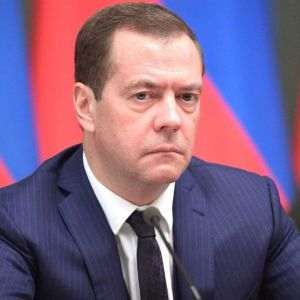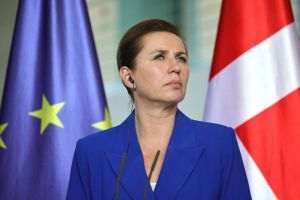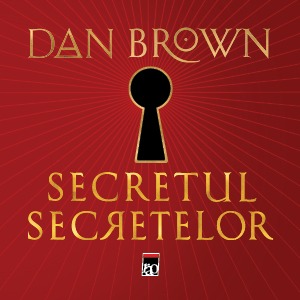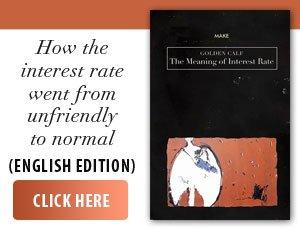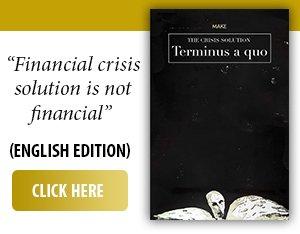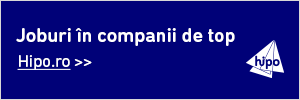In a world where what political leaders establish today is no longer valid on the same day, Donald Trump and Vladimir Putin are meeting tomorrow in Alaska, officially to establish a plan to end the conflict in Ukraine, a plan that, as the American president declared at the end of last week, also envisages "territorial exchanges", without specifying which territories are in question, which is strange if we take into account that the country led by Volodymyr Zelensky represents one of the richest and most strategic regions in Eastern Europe. At this point, it is not known what territories the two world leaders will discuss or what will be negotiated specifically.
The fact is that, if on October 5, 2023, on the occasion of the Valdai Economic Forum, Vladimir Putin claimed that at the end of the war in Ukraine he would build "a new, multipolar world", which would replace "the era of colonial rule, hegemony and the arrogant attitude of the West", now he is going to Alaska to discuss with President Donald Trump a peace solution that provides for territorial exchanges. Basically, through his current attitude, Vladimir Putin shows that the statement of August 5, 2023 is a new lie, from the series of those that the Kremlin leader has accustomed us to. In contrast, Donald Trump claims that through his approach he will regulate an immoral situation, in which he sees President Volodymyr Zelensky as the main culprit, because the Ukrainian leader... did not know how to negotiate, as the American president does. In reality, Trump cannot resolve such an immoral situation, because he himself is immoral. After seeing that Putin was acting immorally, illegally annexing Ukrainian territories, once he took over his second term in the White House, Donald Trump gave free rein to some primal instincts that he is unable to control and talked about annexing Canada, annexing Greenland and even the Panama Canal. That is, about the annexation by the US of territories that do not belong to it, that belong to other states. Exactly what Vladimir Putin did in Ukraine.
It is in the light of these aspects that President Trump's statement at the end of last week must be interpreted, which stated that the peace solution in Ukraine must include exchanges of territories.
What are those? It is not yet known. Western and US media have put forward two scenarios.
The first would involve retaining the territories currently controlled by the Russian and Ukrainian armed forces, i.e., establishing the border between Ukraine and the Russian Federation along the current front line, which would fuel the advance of Russian soldiers into the opposing territory in recent days.
The second scenario involves territorial exchanges in the Donbas (Donetsk and Luhansk), Kharkov, Zaporozhye, Dnipropetrovsk, and Crimea regions, regions whose total mineral resource value is estimated at over $11.5 trillion, resources that include 23 critical materials including lithium, titanium, uranium, manganese, graphite, copper, plus massive reserves of coal, oil, and natural gas.
• Economically interesting territories for both Russia and the US
Why the five territories? Political analysts and experts quoted by the Washington Post, New York Times, The Guardian, Foreign Policy, The Hill and the Arabic-language news agency Al Mayadeen, the area represents a true Eldorado of rare earths, raw materials needed in the race for power triggered by the current technological revolution based on the use of artificial intelligence and innovative technologies.
According to the monographic work "Strategic Minerals of Ukraine and Their Investment Attractiveness”, published in 2023 under the auspices of the Taras Shevchenko National University of Kyiv and carried out in partnership by the National Geological Survey of Ukraine with the Geological Survey of France, with the Geological Surveys of Europe (EuroGeoSurveys) and the EuroGeoSurveys Mineral Resources Expert Group (which includes experts from Ukraine, Germany, Great Britain, France, Portugal, Belgium), four groups of strategic minerals of Ukraine have been identified. The first group refers to traditional raw materials (iron, manganese, titanium, uranium, kaolin, foundry sands, building and facade stones, refractory clays), while the second group concerns raw materials with high potential (rare earths, zirconium and hafnium, lithium, scandium, germanium, graphite, potassium salts, garnet, quartz raw materials, piezoquartz), where the resources are significant, the level of investment attractiveness is quite high, over 70%. The third group of minerals refers to promising raw materials (nickel and cobalt, chromium, aluminum, copper, tantalum and niobium, beryllium, gold, phosphorites, apatite, fluorite, glauconite, limestones and dolomites of flux, limestone for the sugar industry, bentonite clays, feldspar raw materials), and the fourth to other raw materials such as vanadium, lead and zinc, tungsten, molybdenum, platinum group minerals, strontium, magnesium, arsenic, rubidium and cesium, barite, boron, dawsonite, bromine and iodine, mineral sorbents, raw materials with a high alumina content, diamond, raw materials for mineral paints, fluorine, sulfur.
Most of the raw materials in groups 1 and 3, i.e. the most attractive mineral resources, are located, according to the cited work, in the five areas mentioned above. In practice, these regions form a unique economic and strategic chain, in which mineral resources, energy, agriculture and geographical position are interdependent. Their control can decide the global economic balance in critical areas such as energy transition (lithium, uranium, nuclear energy), heavy industry (steel, aluminum) and food security (grains, fertile lands). And their control is very important, both for Russia, which has conquered a good part of these territories, and for Donald Trump, who in the first half of 2025 practically forced the Ukrainian authorities to sign with the American ones, on April 30, an agreement on the joint exploitation of these rare minerals located in the subsoil of Ukraine.
• Donbas and Dnipropetrovsk, the most coveted regions in terms of mineral resources
According to the media sources cited above, Donetsk is the industrial and mining center of Ukraine. Before the war, the largest coal mines were located here, with reserves estimated at about 27 billion tons, representing over 60% of national production. The region has important deposits of iron ore, manganese and lithium deposits in the Shevchenko area, with strategic potential for the electric battery industry. The industrial infrastructure includes metallurgical plants, chemical plants, coke plants and ore processing facilities, which before 2014 generated over 16% of Ukraine's industrial GDP. Its geographical position is an asset, being a true essential logistical and military hub.
Lugansk completes the profile of Donbas with significant reserves of coal and ores, contributing about 8% to Ukraine's industrial GDP before the war. The region plays a key role in Ukraine's energy network, connecting Donbas with the center of the country and providing rail transport corridors to Russia. The local industry is oriented towards metallurgy, machine building and chemical products. Control of Lugansk also means control of natural gates to the east, facilitating the integration of the territory into the Russian infrastructure.
Practically, the mineral resources of the two regions of Donbas are estimated by experts at 7.5 trillion dollars.
Kharkiv, with a population of about 1.4 million, is Ukraine's second-largest urban center and a major industrial, academic, and research hub, the sources cited say. The region specializes in the production of heavy machinery, armored vehicles, energy equipment, and high-precision engineering goods. Agriculture also plays a major role, with fertile soils and food processing capabilities. Located just 40 km from the Russian border, Kharkiv controls rail and road routes connecting Kiev to the Donbas and Moscow. Before the war, its contribution to the national industrial GDP was about 6%, and exports included industrial equipment, metal products, and grain. Its mineral resources are estimated to be worth $80 billion, according to experts cited by the media sources cited above.
Zaporozhye is Ukraine's energy jewel, home to the country's largest nuclear power plant with a 6,000 MW installed capacity - the largest in Europe, capable of producing almost 20% of the country's electricity. The local industry specializes in aluminum, steel, shipbuilding, and mechanical engineering. Zaporozhye is also a control point on the lower Dnieper River, giving it a unique strategic position for logistics and defense. Before the invasion, the region contributed about 5% of Ukraine's industrial GDP and exported aluminum, steel products, and electricity. Zaporozhye's mineral resources are estimated to be worth $370 billion.
Dnipropetrovsk (population about 3.1 million) is the engine of Ukraine's metallurgy and machine building, with major steel mills and aerospace plants. It produces over 17% of the country's steel, making it a hub for heavy industry and exports of metal products. Agriculture is highly productive, with over 2 million hectares of arable land, and the railway and river infrastructure (the Dnieper River) provide direct links to the Black Sea ports. The region's defense and aerospace industries are of strategic interest to any power seeking technological and military control of the area. Its mineral resources are estimated at 3.5 trillion US dollars.
To all this, Crimea would be added, which is under the total control of Russia. The Crimean peninsula has an unparalleled geostrategic advantage: control of the Black Sea and naval projection to the Mediterranean. The deep ports of Sevastopol and Kerch, combined with military infrastructure, allow control of maritime traffic to the Bosphorus. The resources in the area include salt mines, limestone, offshore oil and gas potential (billions of cubic meters), plus an agriculture adapted to the Mediterranean climate. According to experts, the mineral resources of Crimea are estimated at $ 200 billion, to which could be added those of the nearby region, Kherson, which amounts to $ 50 billion.
We also show that, before the war in Ukraine, the gross domestic product of each region was as follows, according to data taken from the daily Kommersant and from information on the website ukrainetrek.com: Dnipropetrovsk - $9.6 billion, Kharkov - $6.06 billion, Donetsk - $5.38 billion, Zaporozhye - $4.08 billion, Lugansk $1.23 billion. Kommersant also shows that, as for Crimea, eight years after its takeover by the Russian Federation following the illegal aggression in 2014, at the beginning of the current war in Ukraine, the GDP of this region amounted to $9.32 billion, and the main city, Sevastopol, had a GDP of $3.26 billion.
In light of the above, it can be said that the negotiations in Alaska are not about symbolic borders, but about who will control the resources that can dictate the global economy in the coming decades. Beneath the surface of these territories lies the real stakes: the economic, energy and military power of the future.
• European leaders outline peace terms: no recognition of Russian occupation
European leaders have sent a strong message to US President Donald Trump ahead of his crucial meeting with Vladimir Putin, stressing that peace talks on the Russia-Ukraine conflict cannot include any legal recognition of territories under Russian control and that a ceasefire must be the first step in any agreement.
After the European leaders' meeting in a mixed format - physical and teleconference - that they held with US President Donald Trump, German Chancellor Friedrich Merz said that the security of Europe and Ukraine was non-negotiable and that any territorial concession would be a major strategic mistake.
French President Emmanuel Macron added to this message, saying that there had been no serious discussions on a territory swap and that France remained open to adopting new sanctions against Russia if the situation required it. Macron also noted that Donald Trump had said that any territorial issue could only be negotiated with Ukraine. The French president also noted that Trump had expressed his desire to achieve a ceasefire in Ukraine during his meeting with Vladimir Putin.
Ukrainian leader Volodymyr Zelensky warned that Putin was "bluffing” about his desire to end the war, accusing Moscow of intensifying attacks on all fronts to create an advantage before negotiations. He insisted that no discussion on the future of Ukraine should take place without Kiev's participation, proposing a trilateral meeting with the US and Russia.
NATO Secretary-General Mark Rutte confirmed the unity of Western leaders, stressing that "the ball is now in Russia's court” and praising the close coordination with Trump ahead of the Alaska meeting.
Germany and France hope that this diplomatic moment will pave the way for a real de-escalation, but skepticism remains high, especially after Donald Trump won the appeal against the decision to freeze foreign aid, a legal victory that strengthens his position vis-à-vis the Kremlin. In this climate, the stakes of the Trump-Putin meeting go beyond a simple discussion of the Ukrainian front, targeting the entire European security balance and the credibility of international commitments to defend the sovereignty of states.










